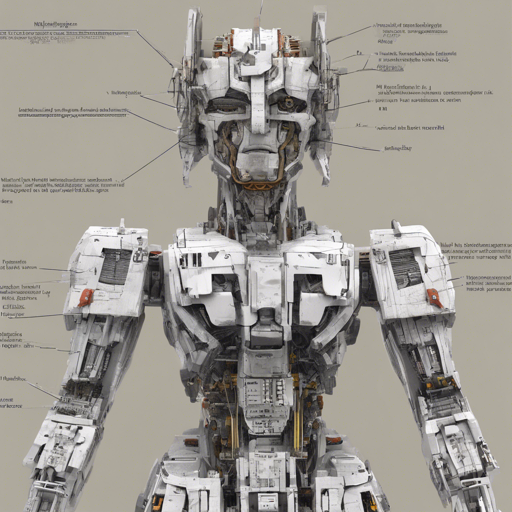Welcome to this guide where we’ll dive into one of the cutting-edge tools available in the world of artificial intelligence— the Multilingual Sentence-Transformers CLIP-ViT-B-32 model. This model will help you map both text and images across more than 50 languages into a shared, dense vector space. This approach allows for seamless communication between images and their corresponding text descriptions, making it a powerful asset for applications like image searching and multilingual zero-shot image classification.
Getting Started with Sentence-Transformers
To begin, you will need to have the sentence-transformers library installed. Here’s a quick rundown of the steps:
- Ensure that Python is installed on your system.
- Open your terminal and install the necessary package with the following command:
pip install -U sentence-transformersUnderstanding the Code: An Analogy
Think of the CLIP-ViT-B-32 model like an art gallery guide. Just like a guide understands how to lead visitors to pieces of art based on their descriptions, this model interprets text and images to find their connections.
Imagine you want to search through images of various subjects. Instead of calling out to the gallery for assistance, you simply provide a description. This is exactly how this model functions:
- The **image model** holds the structure of the gallery, understanding the visual intricacies of each piece.
- The **text model** translates descriptions in over 50 languages, making sense of the intricacies of language.
- The **cosine similarity** calculation helps determine which image best matches a given description, much like the guide quickly pointing to the artwork that matches your inquiry.
Loading and Encoding Images
Once the models are set up, you can proceed to load and encode images. Here’s a streamlined process:
from sentence_transformers import SentenceTransformer, util
from PIL import Image
import requests
import torch
img_model = SentenceTransformer('clip-ViT-B-32')
text_model = SentenceTransformer('sentence-transformers/clip-ViT-B-32-multilingual-v1')
def load_image(url_or_path):
if url_or_path.startswith("http:") or url_or_path.startswith("https:"):
return Image.open(requests.get(url_or_path, stream=True).raw)
else:
return Image.open(url_or_path)
Mapping Text and Images
The next step involves mapping images and their corresponding text. Here’s how you can do that:
img_paths = [
"https://unsplash.com/photos/QtxgNsmJQSs/download?ixid=MnwxMjA3fDB8MXxhbGx8fHx8fHx8fHwxNjM1ODQ0MjY3",
"https://unsplash.com/photos/9UUoGaaHtNE/download?ixid=MnwxMjA3fDB8MXxzZWFyY2h8Mnx8Y2F0fHwwfHx8fDE2MzU4NDI1ODQw",
"https://unsplash.com/photos/Siuwr3uCir0/download?ixid=MnwxMjA3fDB8MXxzZWFyY2h8NHx8YmVhY2h8fDB8fHx8MTYzNTg0MjYzMgw"
]
images = [load_image(img) for img in img_paths]
img_embeddings = img_model.encode(images)
texts = [
"A dog in the snow",
"Eine Katze", # German: A cat
"Una playa con palmeras." # Spanish: a beach with palm trees
]
text_embeddings = text_model.encode(texts)
Calculating Similarity Scores
After encoding images and texts, you can now compute cosine similarities:
cos_sim = util.cos_sim(text_embeddings, img_embeddings)
for text, scores in zip(texts, cos_sim):
max_img_idx = torch.argmax(scores)
print("Text:", text)
print("Score:", scores[max_img_idx])
print("Path:", img_paths[max_img_idx])
Running into Issues? Here’s How to Troubleshoot
As with any technology, you might encounter a few bumps along the way. Here are some common troubleshooting tips:
- Import Errors: Double-check that you have installed the sentence-transformers library correctly.
- Image Loading Problems: Ensure the URLs or paths are correctly formatted and accessible.
- Similarity Calculations: Verify the inputs to the cosine similarity function; mismatched dimensions can lead to errors.
- For persistent issues or more complex inquiries, feel free to reach out and get insights from the community at fxis.ai. We are here to assist you!
Conclusion
By employing the multilingual CLIP-ViT-B-32 model, you open up a world of possibilities in image and text processing across different languages. Remember that this tool not only enables you to search images but also broadens the way we understand and classify information.
At fxis.ai, we believe that such advancements are crucial for the future of AI, as they enable more comprehensive and effective solutions. Our team is continually exploring new methodologies to push the envelope in artificial intelligence, ensuring that our clients benefit from the latest technological innovations.
Further Exploration
For demos and deeper insights, check out the demo notebook and the Colab version.

